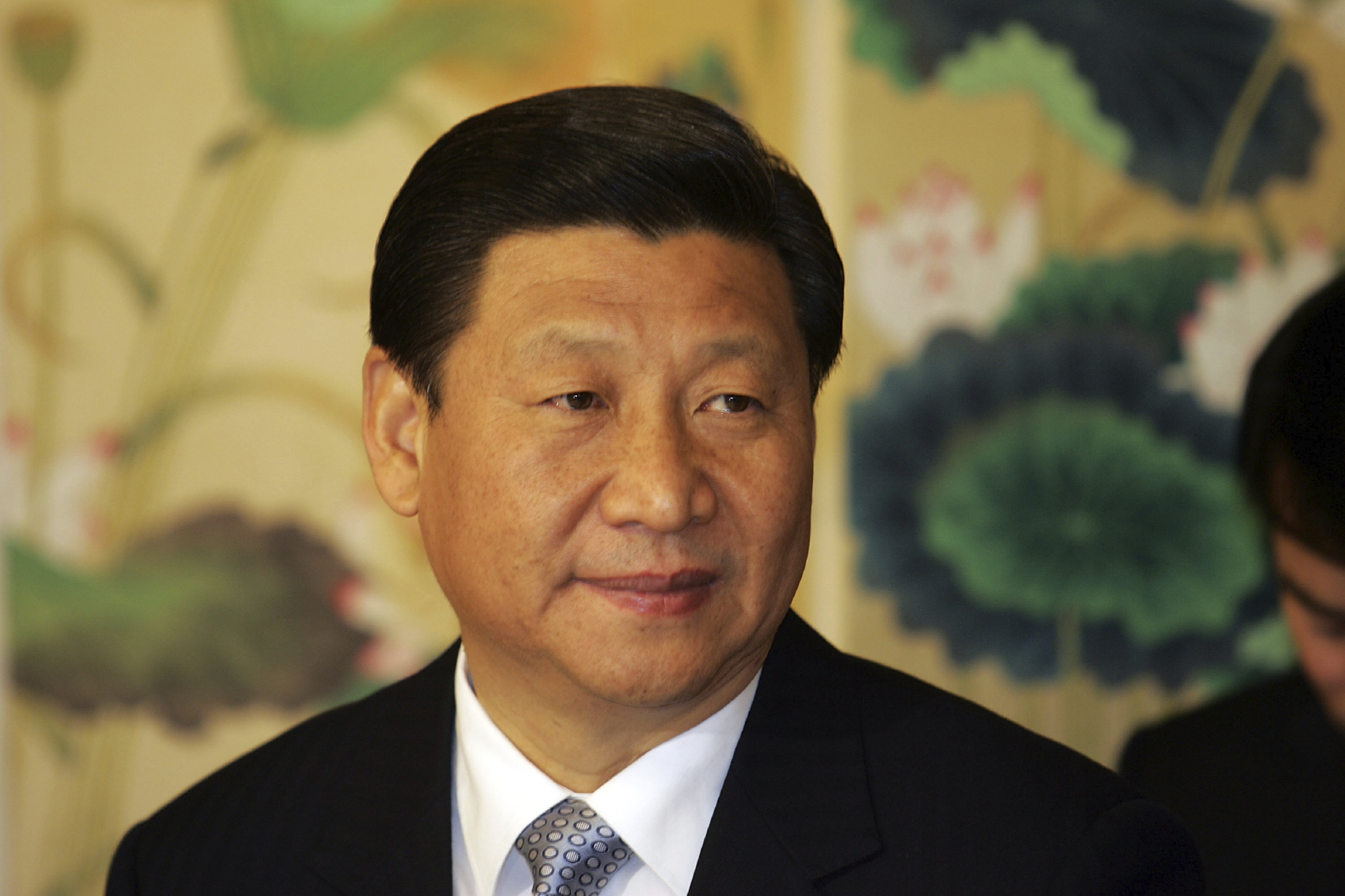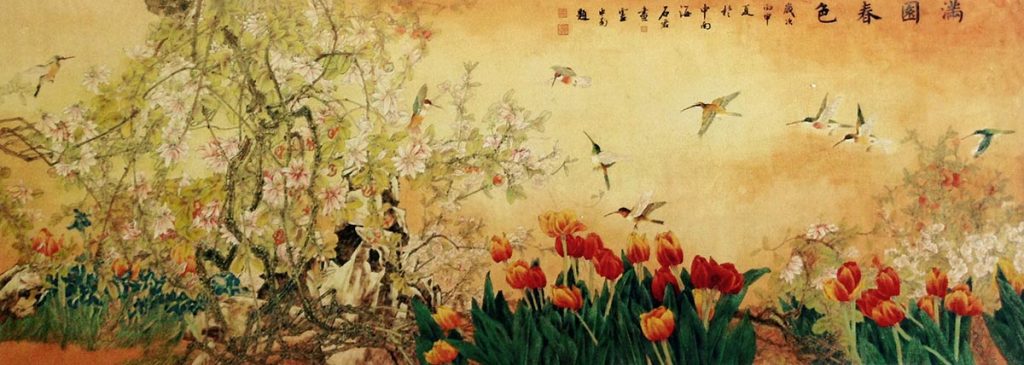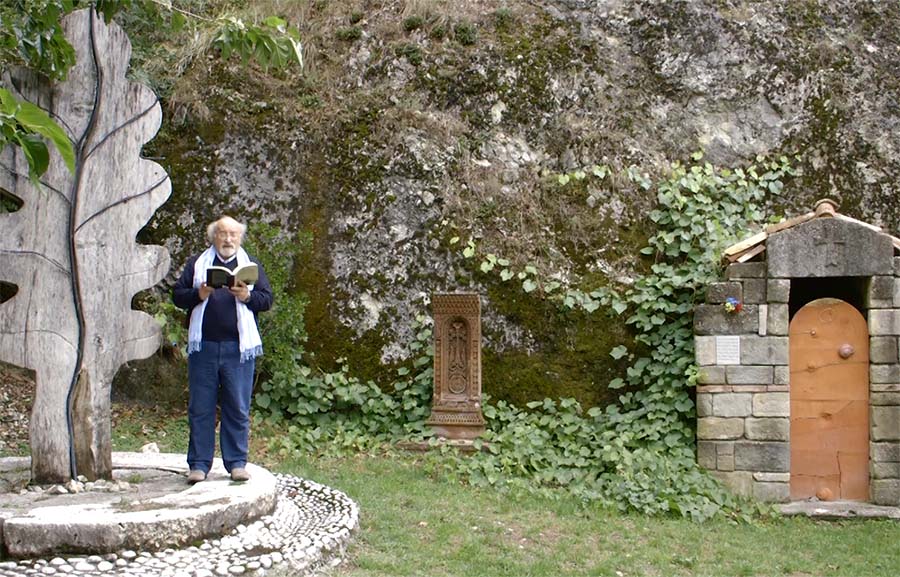Taipei (March) –
Who is the most favorite artist of Chinese President Xi Jinping, the most powerful Chinese leader since Mao Zedong? The question, left a little ‘out of curiosity and a bit’ to bet in Hong Kong, capital of art these days with the newly inaugurated Art Basel, had a surprising response and I like to let you know.
GALEOTTA WAS A PHOTO
The first leg of the journey on the trail of the Unknown Artist is a photo in the newspapers showing the Hall of Encounters in Zhongnanhai, the complex of buildings adjacent to the Forbidden City in the center of Beijing, home of the Chinese Communist Party and the Government of the People’s Republic : in practice, the Kremlin or, if you prefer, the Chinese White House. A mysterious complex (its name means Palace of the two lakes), as it is closed to the public and impossible to photograph except in specific points, such as the main entrance door: China Central Television frequently shows images of the meetings inside the complex, but limiting the filming inside the buildings.
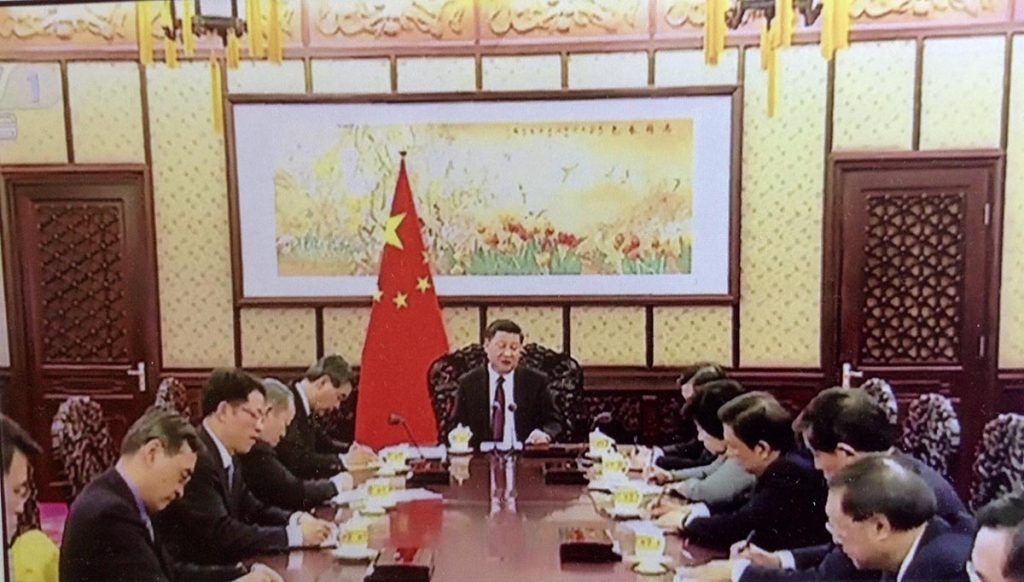
Beijing: Xi Jining receives the governors of Hong Kong and Macao. Behind him appears for the first time the painting A park full of spring colors, one of the ten works of the artist Shi Jun with which President Xi has enriched the rooms of the Zhongnanhai.
That Hall of the Encounters before Christmas 2016 had the walls listed by simple vertical but bare wooden rods, devoid of any pictorial trace. On December 23rd 2016, on Christmas Eve, the image reproduced in the Eastern newspapers of the reception in Xi’s office of the governors of the two Special Economic Zones Hong Kong and Macao (respectively Yu Lean Zhang and Chui Si Yin), shows the Chinese president with a giant canvas behind him. Painted by whom? On which artist did the choice of the number one of Beijing fall to furnish his institutional office?
A SCRIGNO D’ARTE IN TAIPEI
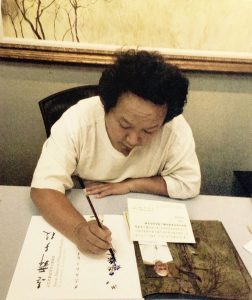
The artist Shi Jun, 60, lives in Hunan, a mountainous province in southern China, halfway up the Yangtze River, birthplace of the Long March leader Mao Zedong. Shi Jun has been the spearhead of the team of artists represented by the Grace Xie gallery in Taipei for twenty years. The artist resumed his dedication to the gift that the Apostolic Nuncio of Taiwan brought to Pope Francis.
Our trip to the Far East on the trail of ancient and contemporary art leads to one of the first answers we propose to collect. Grace Xie, a well-known gallerist in the Liang Yi Culture Company headquarters in the center of Taipei, the capital of the island of Taiwan, provides it with her sister Aria who fills her eyes with beauties of all kinds (paintings, sculptures, rare books), shawls reproducing details of works of art):
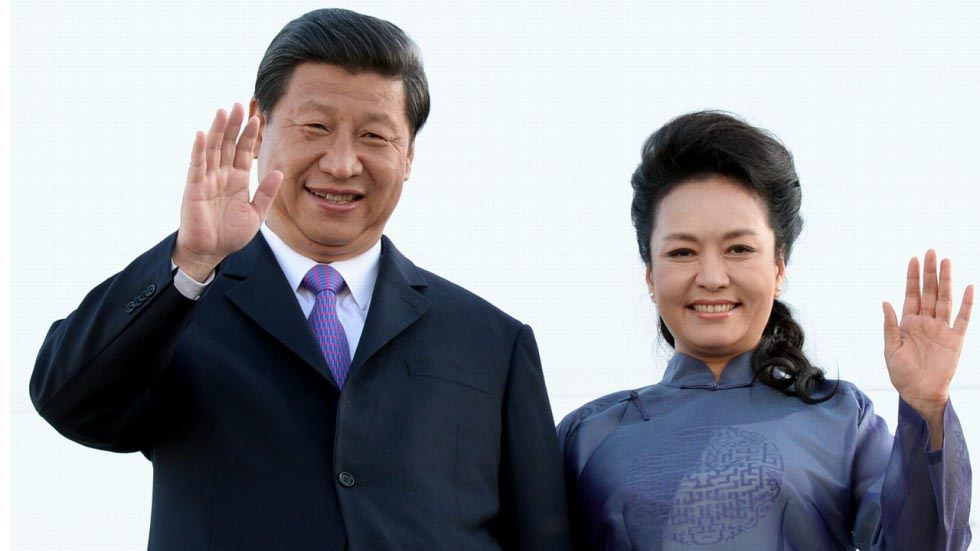
Xi Jinping (Fuping, June 15, 1953) with his wife Peng Liyuan, an opera singer with a passion for art. Married in 1987, she gave the Chinese leader a daughter, Xi-Mingze, student at Harvard. On March 17, Xi was elected by the 2,970 delegates for a second term at the summit of the People’s Republic of China from the 13th National People’s Congress, the annual legislative session, which could have it govern for a longer time after the removal of the limit from the Constitution of the two terms. Xi was also confirmed as head of the Central Military Commission. In this way, Xi maintains the “trinity”: general secretary of the Chinese Communist Party, Presidency of the Republic and Presidency of the Central Military Commission. He is part of the group Taizi (“red princes”), which brings together the children and grandchildren of the protagonists of the “Long March” and the victory of 1949: he is the son of Xi Zhongxun, a Communist long standing, vice premier of reformist inspiration (he was the architect of the special economic zones desired by Deng Xiaoping in the early eighties to favor the industrial take-off of the country and attract foreign investments).
DECISIVE THE INTERVENTION OF THE FIRST CHINESE FIRST LADY
Grace tells the story of this turn of Xi in the direction of art:

The Archbishop Paul Fitzpatrick Russell, before leaving for the new seat assigned by the Vatican (in 2016 he was transferred as Apostolic Nuncio for Turkey and Turkmenistan) wanted to give to Pope Francis a shawl and a catalog autographed by Shi Jun. Artist who now combines two realities (China and the Vatican) in slow but steady and, hopefully definitive, approach.
THE ART WIRE THAT JOINS XI AND POPE FRANCIS
A last but not least interesting curiosity: Archbishop Russell, before leaving for the new seat assigned to him by the Vatican, in 2016 he was transferred as Apostolic Nuncio to Turkey and Turkmenistan) wanted to give to Pope Francis a shawl and a catalog autographed by Shi Jun. Artist who now combines two realities (China and the Vatican) in slow but constant and (hopefully definitive) approach.


